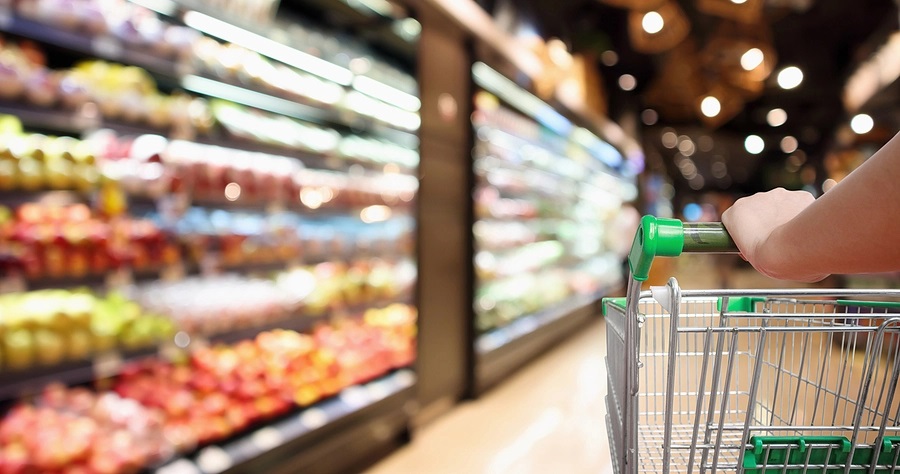Keeping It Fresh: Navigating the Challenges and Opportunities of Cold Chain Logistics in the Food Industry

The world’s food supply chain is one of the most complex logistical networks on earth, and the demand for fresh products has never been higher. From farm to table, the ever-changing logistics landscape includes new regulations and consumer expectations. However, today’s innovative technology solutions meet these challenges and provide a sustainable and responsible cold chain logistics system for everyone involved.
What is the cold chain?
Cold chain logistics is the process of maintaining the temperature-controlled supply chain of perishable goods, such as food products. It involves transporting and storing products at a constant temperature, from the point of origin all the way to the point of consumption. To maintain cold chain integrity during transportation, businesses must have access to reliable refrigeration equipment and knowledgeable staff to operate it properly.
The first tech designed for the cold chain was Frederick Jones’s 1930 patented portable air-cooling unit to be used in trucks. Today’s modern-day chain involves the same principles employed in shipping containers with built-in cooling systems and temperature-controlled aircraft.
The cold chain is about more than just refrigerated trucks or containers with onboard cooling systems. It is an intricate logistics system incorporating all the steps in transporting, storing, handling, and distributing perishable products. It involves food inspections at customs, anti-contamination measures, and proper documentation.
Cold chain logistics is a complex issue addressed by many different solutions, but the goal is ensuring customers receive products in prime condition. While most food products are considered part of the cold chain, many non-food products — such as pharmaceuticals, flowers, and certain electronics — also require climate-controlled logistics solutions.
Tech innovations in the cold chain
Until recently, food was shipped using traditional methods not designed for handling perishable products. In the past, suppliers were forced to compromise on quality and safety to meet consumer demand for speed and convenience.
Fortunately, things are changing. Consumers have become more concerned about their health and more eco-conscious. To meet mounting consumer demands at scale, manufacturers are exploring new technologies that keep their products safe and fresh while reducing costs and increasing efficiency along their distribution routes.
Innovative solutions from logistics companies delivering perishable goods include insulated containers equipped with cooling units. These containers are designed so that food items can be transported safely during transit times ranging from hours to days.
However, maintaining appropriate temperatures is not enough. Monitoring systems track data such as ambient air temperature and internal temperatures within each unit of equipment used in transportation from origin all the way to final delivery points like supermarkets or restaurants. Throughout the cold chain, refrigerated trucks, refrigerated warehouses, refrigerated storage, and refrigeration units require constant monitoring. The data is visible across the entire supply chain thanks to recent advances in automation and blockchain technology.
The technology required to keep goods in the cold chain from spoiling also involves advances in packaging, arguably one of the most important aspects of food storage and transportation. It protects products from damage, contamination, and other factors that can cause spoilage.
While there are several types of packaging, each type has its own benefits depending on what kind of perishable item is being shipped. Some are better suited than others for longer journeys; some offer superior protection against moisture damage caused by condensation build-up during shipment. Others allow optimal visibility inside the package without compromising FDA or USDA guidelines for food safety compliance when handling perishable goods.
Environmental benefits of maintaining a robust cold chain
The food industry accounts for over one-third of the world’s greenhouse gas emissions as well as 30% of all global energy use. This makes it one of the most environmentally impactful and energy-intensive industries in the world.
Compounding the problem of the above statistics, the USDA estimates that 30-40% of the US food supply is wasted every year. One reason cited for this waste is poor storage and care during transportation. Cutting down food loss during transport would increase the food supply and decrease agriculture’s and transportation’s heavy load on the environment.
The global demand for fresh food products calls for a sustainable and responsible cold chain logistics system that limits waste, reduces packaging, and lowers emissions during transport. Innovative technologies stand ready to help processors save money on transport costs and ensure products arrive in pristine condition. Solutions like blockchain in tracking shipments, autonomous delivery vehicles, and innovations in packaging keep products fresh and safe from farm to fork, allowing us to look forward to tomorrow’s challenges with confidence.
Source: Foodindustryexecutive